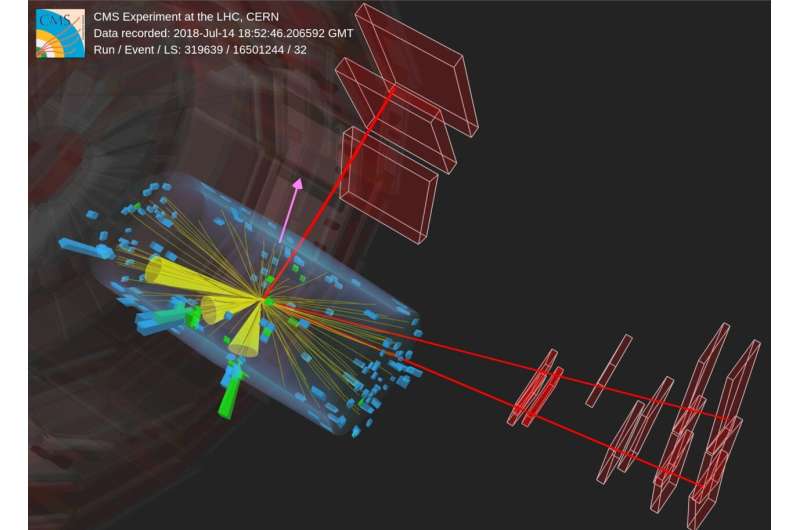Experiments at the Large Hadron Collider (LHC) have reached a remarkable milestone as researchers from the CMS collaboration have for the first time observed the production of a single top quark alongside a W and a Z boson. This extraordinary event, referred to as tWZ production, occurs only once in every trillion proton collisions, making it one of the rarest processes currently detectable at the LHC.
The creation of a top quark, a W boson, and a Z boson presents a unique opportunity for physicists to deepen their understanding of fundamental forces. By analyzing tWZ production, scientists can explore how the top quark interacts with the electroweak force, which is mediated by the W and Z bosons. Furthermore, the top quark stands out as the heaviest known fundamental particle, significantly influencing the Higgs field. Therefore, studying this process could unveil insights into the Higgs mechanism and potentially reveal signs of new physics beyond the Standard Model.
Challenges in Observing Rare Processes
Despite the significance of tWZ production, observing this phenomenon poses considerable challenges. Its rarity and resemblance to a more frequent process known as ttZ production complicate the analysis. The ttZ production, which involves a top and an anti-top quark alongside a Z boson, occurs approximately seven times more frequently than tWZ production. This discrepancy results in substantial background noise that researchers must effectively identify and separate.
“Because of its rarity and its similarity with the ttZ process, observing tWZ production requires advanced analysis techniques involving state-of-the-art machine learning,” explained Alberto Belvedere, a researcher affiliated with the CMS collaboration at DESY. Utilizing sophisticated machine learning algorithms, the team successfully differentiated the tWZ production signal from the surrounding background data.
The findings from this groundbreaking research have been made available on the arXiv preprint server. Notably, the CMS collaboration reported that the rate of tWZ production was slightly higher than theoretical predictions. This development raises intriguing questions about whether the observed discrepancy is merely a statistical anomaly or a potential indication of undiscovered interactions or particles.
Future Implications for Physics
The implications of this discovery extend beyond mere observation. “If there are unknown interactions or particles involved, the observed deviation between the measured rate of tWZ production and the prediction would rapidly become larger with increasing energies of the outgoing particles, an effect that is unique to the tWZ process,” stated Roman Kogler, also a researcher with the CMS collaboration.
The observation of tWZ production marks a significant achievement for the CMS collaboration and serves as a reminder of the LHC’s pivotal role in unraveling the universe’s most elusive secrets. With further data collection and analysis, researchers hope to clarify the implications of these findings and potentially uncover new physics that could reshape our understanding of the fundamental forces governing the universe.
More information about this groundbreaking observation can be found in the publication titled “Observation of tWZ production at the CMS experiment” available on arXiv as of November 3, 2025.































